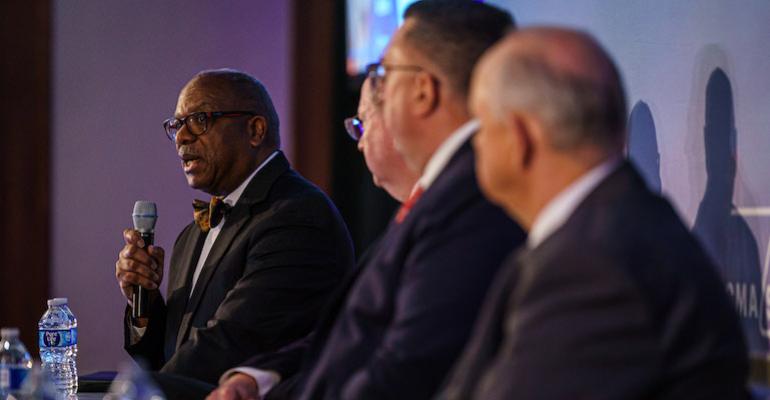Speaking at CMA Shipping, Ulysses Hammond, Executive Director at Connecticut Port Authority, told attendees that within two weeks, South Fork will become the first completed utility-scale offshore wind farm in the US, generating 132 MW of power to the state of New York.
The rapid growth of offshore wind power projects in the New York area has seen two finger piers at Connecticut Port Authority’s port of New London transformed into a 20-acre pier and the only one on the East Coast capable of marshalling wind turbine nacelles, blades, and towers at one time, said Hammond.
The pier can handle loads up to 5,000 lbs per square foot, said Hammond, with 3,000 lb/sq ft on the lay down area. Development at the port will support work at the 304 MW Revolution Wind project and 934 MW Sunrise Wind project as well as South Fork Wind.
Since the delivery of the first turbine to site on 31 October 2023, 12 wind turbines have been delivered to the South Fork Wind site and all are expected to be online and delivering power within the next two weeks. The completion of the project will be a milestone in US offshore wind development.
Work on offshore wind projects at Connecticut’s ports will continue after the South Fork switch on.
“In April, we will be looking at another 65 turbines for Revolution Wind which will bring 704 MW of power to Connecticut and Rhode Island. Then behind that we are scheduled for sunrise wind for 84 turbines that will be bringing power to New York,” said Hammond.
Gordon Carr, Executive Director at New Bedford Port Authority, Port of New Bedford, noted the increase in demands from offshore wind, from the 4,100 lb/sq ft loading limit at New Bedford, through the 5,000 lb limit at New London, through the 6,500 lb rating at a facility under construction in New Jersey.
The rising capacities reflect change in turbine technology, he said. Speaking about Vineyard Wind, the project served by the Port of New Bedford, Carr said: “What's interesting is that the original project was designed for 1.3 MW turbines, and blades that were maybe 75 feet long. We're deploying 14 MW turbines, and 310 foot blades, so we’re seeing an exponential growth of the industry and the components.”
Carr noted the scale of the challenge ahead in reaching offshore wind power deployment goals. The current pipeline stands at around 1.7 GW of power compared to a goal of 30 MW with a deadline in just six years’ time. “Think about the amount of port facilities that need to be deployed in order to come close to that,” he said.
Development of facilities in the relatively confined ports of the US Northeast may prove valuable as offshore wind development spreads across the US coast, said Carr. “I think once we get down to the middle Atlantic, you may see vastly larger spaces, and a little bit more capacity to deliver some of these things and apply the understanding about how to keep pace with that growth of the technology.”
Copyright © 2024. All rights reserved. Seatrade, a trading name of Informa Markets (UK) Limited.
Add Seatrade Maritime News to your Google News feed.  |

